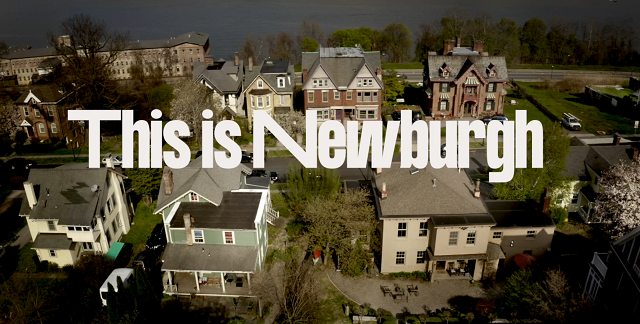Today WNYC News highlighted the efforts of the Newburgh Land Bank with their article titled, After the Crash, Banks Paid Billions. Where’d it All Go? The article comes out on the heels of a new decision made in Albany to double the amount of land banks in New York State.
The Newburgh Land Bank is focusing on streets that radiate north of Broadway: Lander, Chambers etc, of which, 25% of properties are vacant. Don’t just read the article, listen to the audio as there are more details. They are hoping to make this area the poster child for change that a land bank can bring about to a neighborhood, block by block. Already the land bank has sold a large apartment building on northern Lander that is being rehabilitated as well as a church and, are looking to stabilize the roof of a defunct dog pound to an interested buyer who would not be able to fix the collapsed roof themselves. Fortunately, they are looking to save many buildings instead of looking at demolition, something these streets have seen too much of already.
Photo © Ilya Marritz








Good news! I am pretty sure the defunct dog pound has sold to a very solid buyer with a great plan.
Things are starting to gain a little traction..
If the objective of the NLB is to diminish blight then its operation may succeed, albeit in the short term. A long term sustainable housing sector is contingent on the employment situation and household formation, both are stagnant if not in decline. It is not a coincidence that there is a greater push for the formation of State sanctioned land banks in depressed cities as the Federal governments interventions efforts to spark a housing recovery, (low rates, loan mods) have been less than meaningful. In fact, the result has been an expansion of the renter class. Good or bad, this expansion running commensurate with stagnant wages and high taxes reduce the ‘return on investment’ for Land Banks and private speculators. While meeting the demand for rentals will reduce the inventory of vacant properties it will also drive up rental rates; in turn, this will limit first time buyers. With mortgage re-defaults running 30+ % the renter class may get larger still.
As per : After the Crash, Banks Paid Billions. Where’d it All Go?
The money allocated to the Land Banks via Bank settlements is in large part taxpayer dollars. Just 20% of the settlements were paid out in cash from the banks as the banks were able to receive a dollar for dollar credit for each mortgage modification they performed under HAMP.